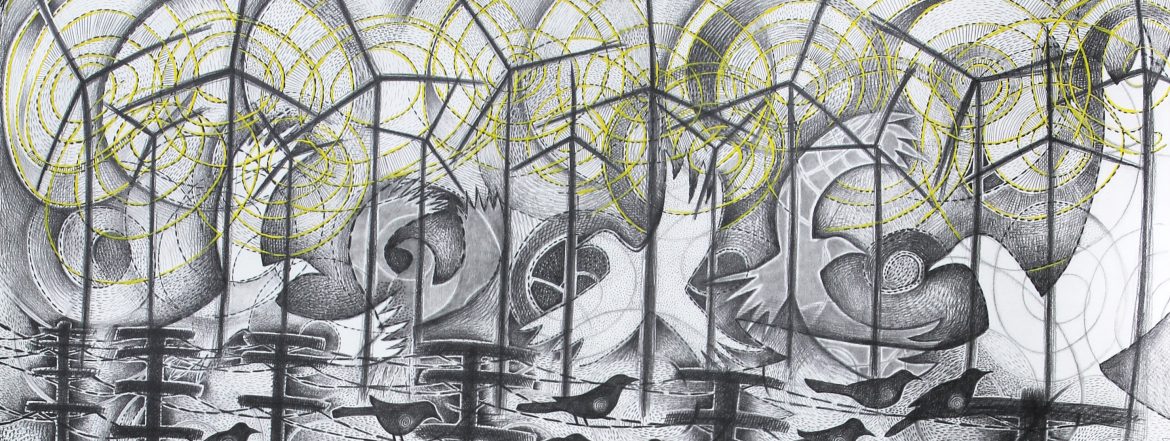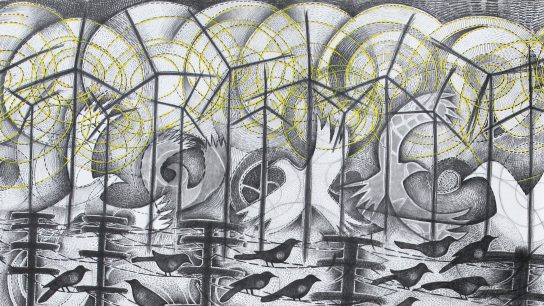Crash, Wave
by
This series of poems began as poems on all manner of waves—light waves, radio waves, atmospheric waves, gravitational waves, and sound waves, as well as waves that everyday people may notice walking through their neighborhoods. As a non-scientist, I found immersing myself in science on waves to be a bit like foreign language immersion. I swam in it and somehow it began to make sense. It reminds me of that moment when you choose to stop fighting ocean waves and instead choose to ride them.
A Bee’s Best Defense
bees hold their position
flip flip flip
shimmer in light
form a dark wave
become vast
beating wings
of Michael, Gabriel
now: tune into the buzz
of our flips
as the shadow passes
you turn, I turn
“A Bee’s Best Defense” was inspired by a ScienceNews article on how giant honeybees work together to defend against aerial threats—predators such as hornets. As they sense an approaching dark object moving against the bright sky, they begin to turn, forming a striking shimmer-wave, and sometimes multiple simultaneous shimmer-waves. This not only confuses the predator, it also alerts fellow bees to danger. The original research by Sajesh Vijayan (Indian Institute of Science Education and Research Thiruvananthapuram, Kerala), Eric J. Warrant (University of Lund), and Hema Somanathan (Indian Institute of Science Education and Research Thiruvananthapuram, Kerala) was published in the Journal of Experimental Biology.
Bird Call
hundreds of snow geese
rest on water
as wind roars
like a jet
swarm of bees
join the murmur
behind the bird calls
the gathering of wings
fly in formation
cross sky back and forth
their V shifts
to angled line
they call each other
louder this time
sandhill crane coos
“Bird Call” was drafted at the Merced National Wildlife Refuge and was inspired by a LiveScience article, “Ultrasonic Waves Are Everywhere. Can You Hear Them?” The original research by Timothy Leighton (University of Southampton) was shared at the 175th meeting of the Acoustical Society of America. He studied how ultrasonic noise, often mechanical or human-made, may be harmful to some people (causing headaches, nausea, etc.) even though many cannot actually hear the sounds. This led me to think that natural sounds, such as those at the wildlife refuge, may be restorative. Leighton’s work also resonates with recent questions raised at the 100th Meeting of the Ocean Studies Board (sponsored by the National Academies) on the impact of human-created noise and particularly low-frequency sound, on marine mammals, as highlighted by Peter Tyack (WHOI/University of St. Andrew), Mike Weiss (Office of Naval Research), and Kim Waddell (University of the Virgin Islands) during that meeting.
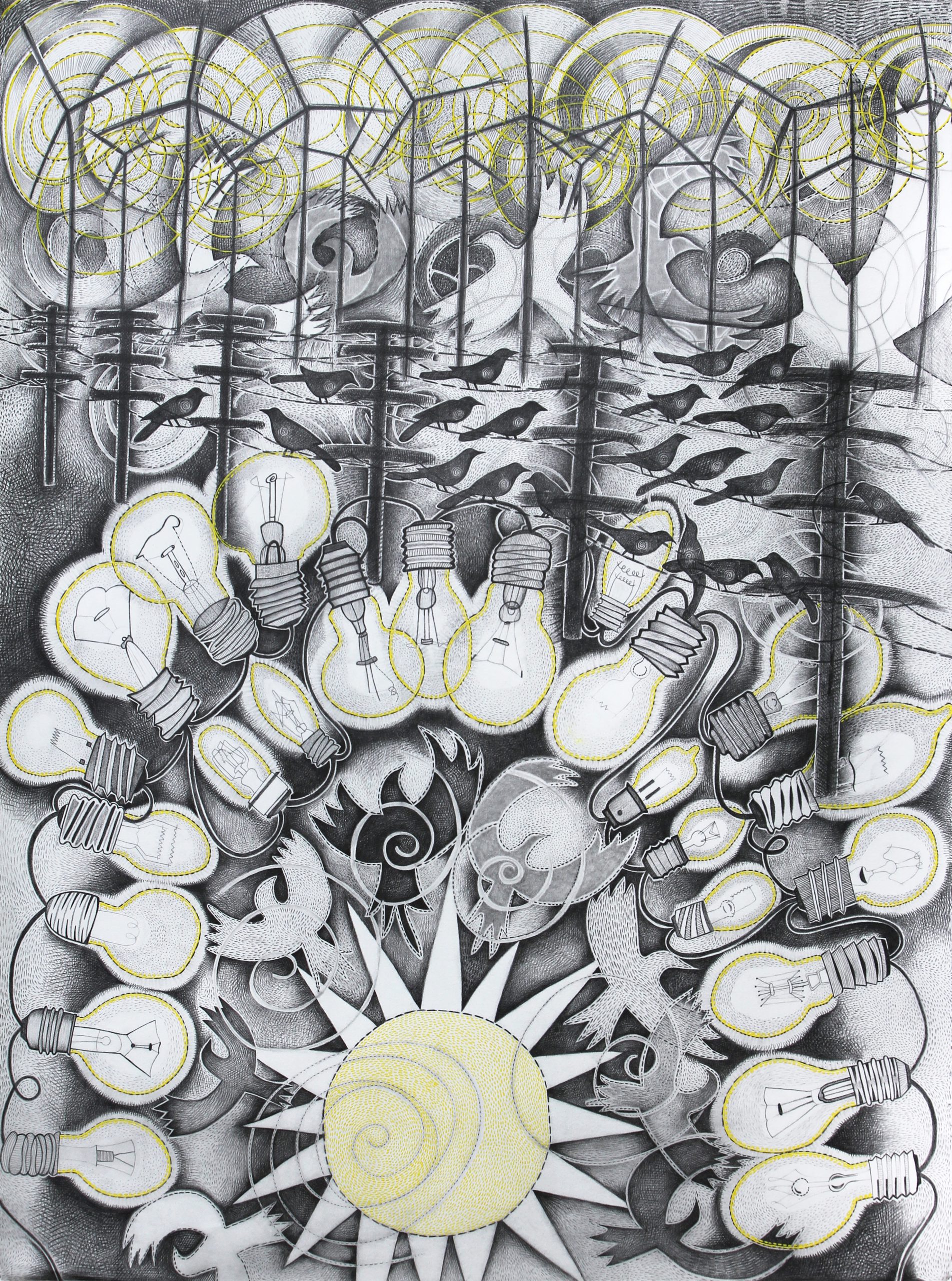
Gravitational Ripples
sabal palms’ cross hatched trunks rise
above the bamboo thicket
hiding clusters of lemon
reaching for light
as date fronds make way for sky
eyes shut: black kaleidoscope
Kandinsky puffs in and out
Mondrian shoulder shimmies
While Rothko’s off skipping rope
El Anatsui waves
The second stanza of “Gravitational Ripples” was inspired by gravitational waves, atmospheric waves, and waves of cerebrospinal fluid that occur in the brain, in this poem imagined through the pulsating art of El Anatsui. A ScienceNews article, “Scientists triggered the flow of spinal fluid in the awake brain,” explains how waves of cerebrospinal fluid may flush out waste in the brain. This most often occurs during sleep but if it can be triggered as this research suggests, there are potential benefits for people suffering from Alzheimer’s disease. The original study featured in the ScienceNews article was published in PLOS Biology by Stephanie D. Williams, Beverly Setzer, Nina E. Fultz, Zenia Valdiviezo, Nicole Tacugue, Zachary Diamandis, and Laura D. Lewis (all at Boston University).
Harmattan
for Martinez Zogo
drums pounding,
kids splashing,
wind in leaves
like water rushing
or smooth waves crashing
like Harmattan speaks
to Khamsin
speaks to solar wind
carrying life breath
that strengthens the core.
ripple, rock, caress
the rooted
letting leaves stretch, reach,
shake themselves off, free
to sway in a dance.
we still want to scream:
did you know his breath
became Harmattan,
Khamsin, solar wind,
will part the Red Sea?
This poem was written for journalist Martinez Zogo, who was tortured and murdered in Cameroon. The poem is also inspired by atmospheric waves, Harmattan (a dust-laden West African wind), and Khamsin (a North African wind), as well as by work being done by Sarif Morningstar, formerly an undergraduate researcher at UC Merced, who has received an NSF Fellowship to pursue a PhD in plant biology at UC Davis.
Meander
smoother
than a straight line,
effortless, balanced,
distributed, sculpting;
no rushing,
pounding force,
no gushing, carving
arrow
linked
half circles
never end, extend,
reach, hold hands, enclosed
momentum balances, refracts earth
itself shaping water into infinite
energy waves
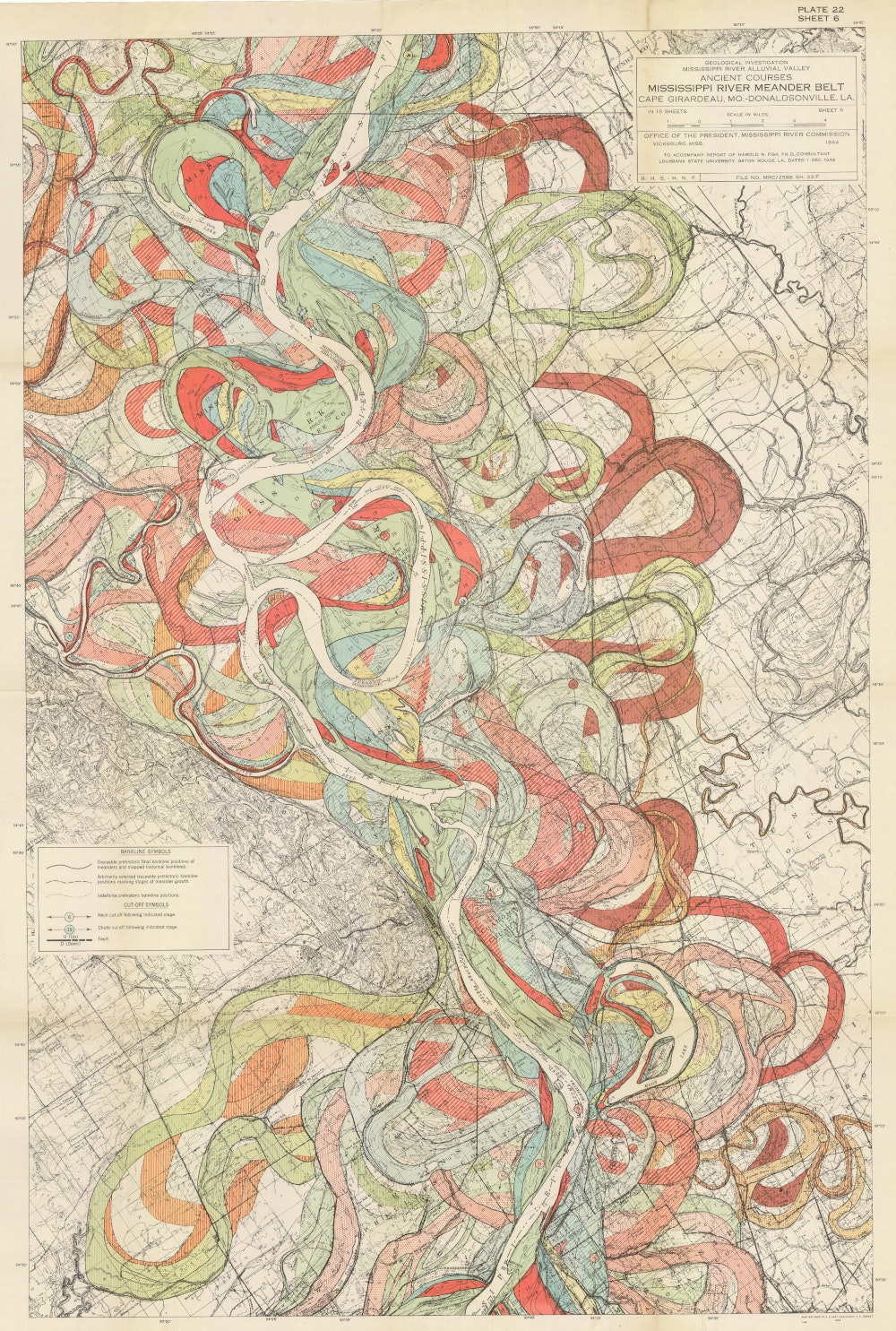
“Meander” was inspired by Albert Einstein’s essay that explains why rivers meander. If you look at a satellite map of the earth you will see all the meandering rivers, which essentially create repeating serpentine waves back and forth over its surface. The poem also resonates with the Russell-Einstein Manifesto on the necessity of peaceful resolution to conflicts in the face of weapons of mass destruction: “We have to learn to think in a new way […] what steps can be taken to prevent a military contest of which the issue must be disastrous to all parties?”
Crash, Wave
strange clouds script
calligraphy
patterns through the atmosphere
crash, wave cloud
delivering
dandelion seeds
manna to each honeybee
follow the blue honeycomb flow,
blur hexagons’ straight edge
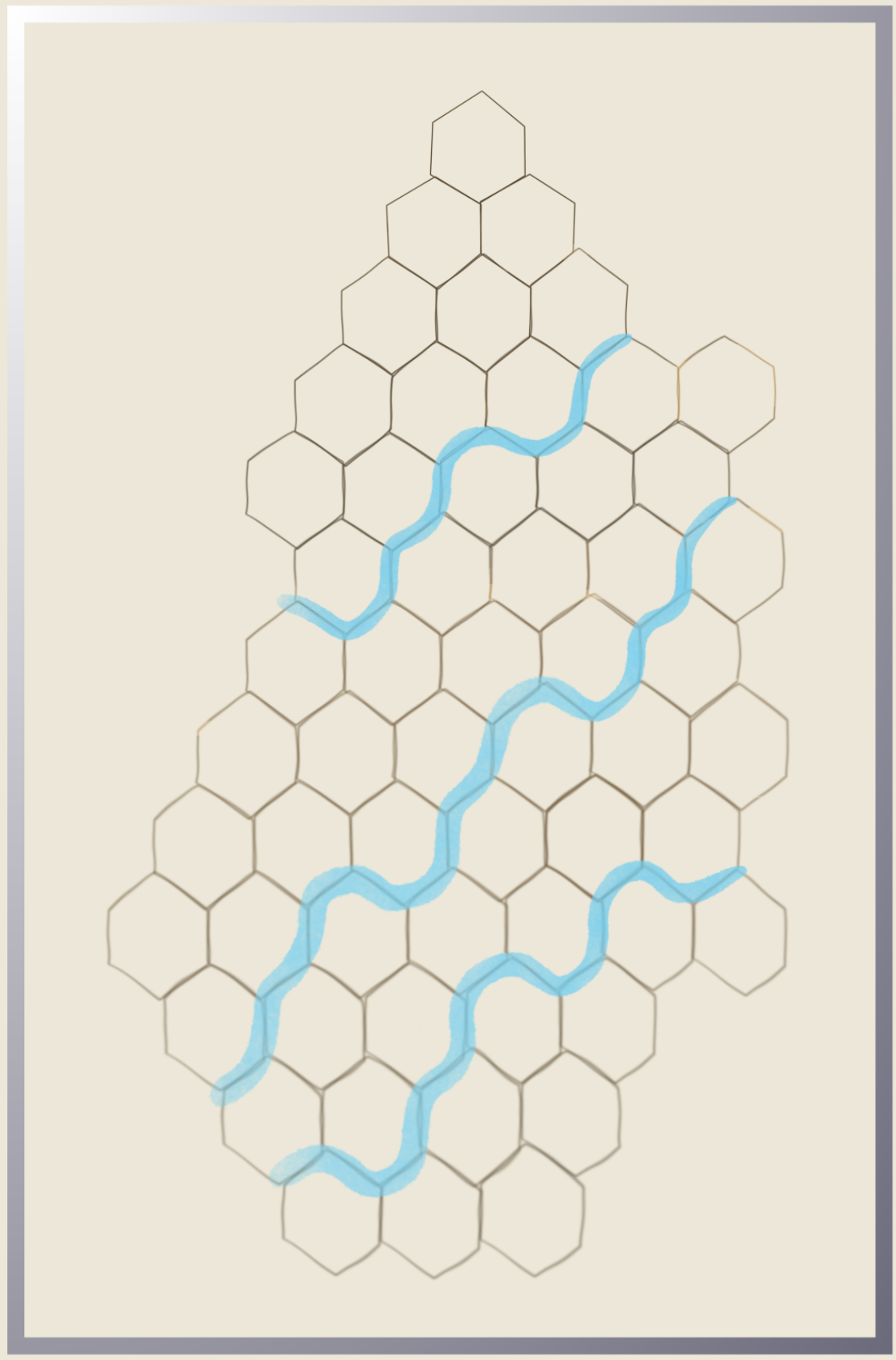
“Crash, Wave” was inspired by Kelvin-Helmholtz clouds, which look like ocean waves, and this draft paper on unidentified aerial phenomena by Abraham “Avi” Loeb (Harvard) and Sean M. Kirkpatrick (All-Domain Anomaly Resolution Office).
Saint Francis and the Water Cannon
MENTIRAS splashed in red
on the Iglesia de San Francisco
as Christ’s arms spread open
surveilling the scene
a black dog walks alongside us
you say we might have to run
yet everyone is calm,
seems not to notice
the water cannon,
the line of 10…20…
30…police cars
rolling slowly, lights flashing
interspersed with white vans
bearing green, crossed rifles
the hotel bar plays
“je ne veux pas travailler…”
Rock Dove
I spy the Andes
like the curve of my spine
laid next to a fish hook
wonder why so few fish
were left in the rivers of Bui
as rock doves scatter
fly at me head on
barely swooping to scale my skull
as skaters fly through the air
defying all constraints
appropriate public art
for their aerial feats
These last two poems began with reflections on muscular bonding, the entrainment of brain waves, synchronous movement, and oscillating populations. But ultimately, they emerged from the CHCI conference in Santiago, Chile, hosted by the Centro Interdisciplinario de Estudios en Filosofía, Artes y Humanidades at the Universidad de Chile, and these poems are focused on social movements as waves. After observing graffiti on most of the walls in the city, I visited the Museum of Memory and Human Rights. An exhibit on “The Battle for the Walls: The Prohibition Against Public Art” explained that walls had been painted white during the Pinochet regime and posters and public art were removed. The exhibit also indicated that “60% of the academic staff and student body of the Universidad de Chile School of Fine Arts was relieved of their duties and/or exiled.” On returning to the U.S., I learned more about the graffiti in downtown Santiago from an interview with Sebastián Cuevas Vergara, an expert on street art, in which he says he thinks Santiago has the most diverse graffiti in the world. The street art, paired with scenes of skaters and protesters claiming public space, refusing silence and immobilization, concludes this series of poems on waves. I leave you with an inscription at the base of the human rights museum: “El museo es una escuela…el artista aprende a comunicarsé; el público aprende a hacer conexiones,” meaning “The museum is a school… the artist learns to communicate; the public learns to make connections.”
Many thanks to Arnold D. Kim, Professor of Applied Math, and Teamrat Ghezzehei, Professor of Environmental Systems (both at UC Merced), who each took time to talk with me about waves as I was finishing this series of poems. Thanks also to Lora Jost for allowing me to share her art and to Charles Payne for creating animation, sound, and an illustration to go with this piece.
